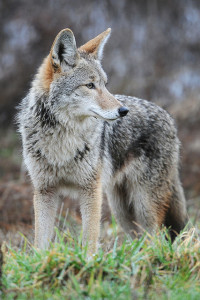Wild animals attacking humans is headline news again.
A New Jersey man was bitten by a coyote on Sunday, April 19, 2015. Days later, tests proved the animal had rabies.
The Bellingham Herald, a west coast newspaper, and other media reported,
“This was the second coyote attack in Bergen County this month.”
Less than a decade ago in North America, coyotes — western and eastern coyotes (aka coywolfs) — were not considered a serious threat to people. But according to a CNN website article dated October 30, 2009, a Canadian folk singer was killed that week by eastern coyotes in Nova Scotia.
And they are now seen in large urban areas like Washington DC and New York.
Should be No Surprise
Thousands of years ago a nation was specifically warned what would happen in the future if she insisted on going in the wrong direction. Part of that consequence included attacks by carnivorous wild animals without an innate fear of man.
What is now known about the hybrid coywolf makes it a potential candidate for that kind of scenario.
The Canadian Geographic website points out that,
“The coywolf has both wolf and coyote characteristics; it hunts in packs and is unafraid of humans, making it more dangerous than its forebears.”
Bears Interbreed Too
Canadian Geographic indicated that another hybrid is the Grizlar bear. Also referred to by various other similar compound names, it is a cross between grizzly and polar bears.
At least so far, it seems to be a rare occurrence. But will the hybrid bear remain very rare in the wild, or is it destined to become like the coywolf?
National Geographic on November 8, 2011 posted an article with the headline of,
“Coyote-Wolf Hybrids Have Spread Across U.S. East”
This was confirmed by a new DNA study. The end of the article concluded with a statement by the individual heading the DNA study,
“Coyotes and coyote-wolf hybrids in the mid-Atlantic are “absolutely established—they’re here to stay.””
Photo credit: Red~Star (CC license permission)
Read more about coywolfs here
Read the CNN article here
Read a BBC article about hybrid bears here
Read the National Geographic article here
